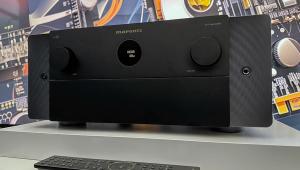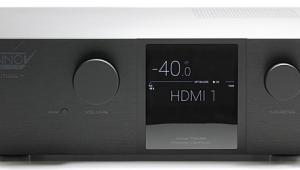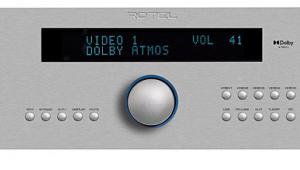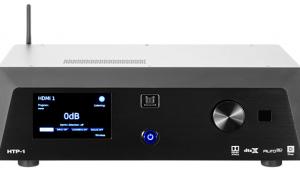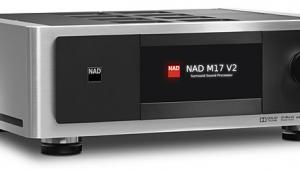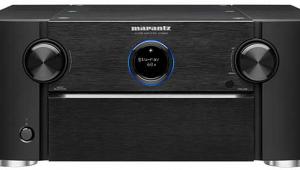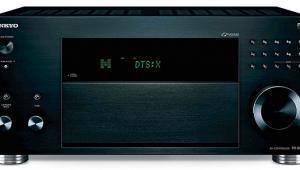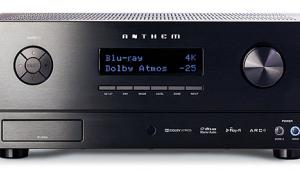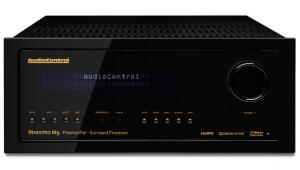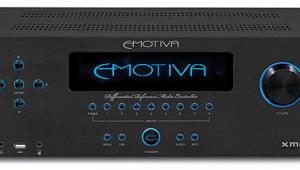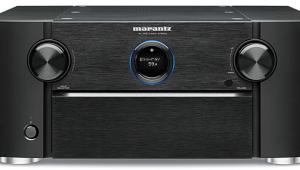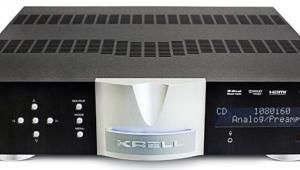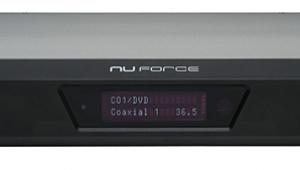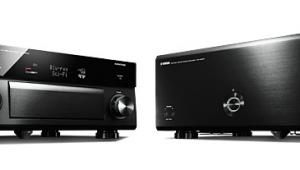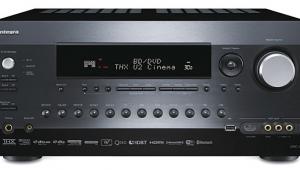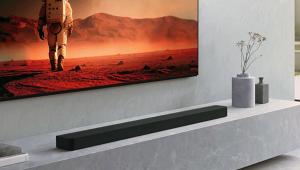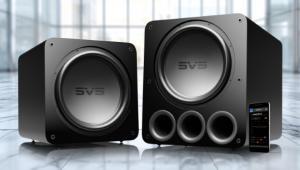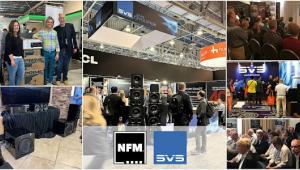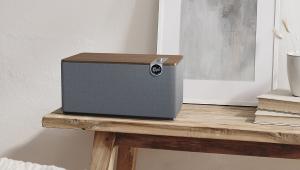Marantz AV7005 Surround Processor and MM7055 Amplifier HT Labs Measures
Marantz AV7005 Surround Processor
Analog frequency response in Pure Direct mode:
–0.05 dB at 10 Hz
–0.00 dB at 20 Hz
–0.01 dB at 20 kHz
–0.07 dB at 50 kHz
Analog frequency response with signal processing:
–0.45 dB at 10 Hz
–0.13 dB at 20 Hz
–0.14 dB at 20 kHz
–15.66 dB at 50 kHz
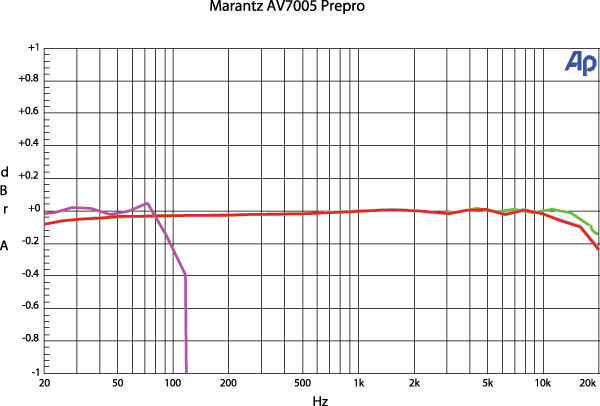
The above chart shows the frequency response of the left (aqua), center (green), left surround (red), and LFE (purple) channels at the preamp outputs of the Dolby Digital decoder. The left channel measures –0.07 decibels at 20 hertz and –0.23 dB at 20 kilohertz. The center channel measures –0.08 dB at 20 Hz and –0.09 dB at 20 kHz, and the left surround channel measures –0.08 dB at 20 Hz and –0.24 dB at 20 kHz. The LFE channel, normalized to the level at 40 Hz, is –0.01 dB at 20 Hz, reaches the upper –3-dB point at 118 Hz, and reaches the upper –6-dB point at 121 Hz.
Response from the multichannel input to the main output measures –0.06 dB at 10 Hz, –0.01 dB at 20 Hz, –0.01 dB at 20 kHz, and –0.07 dB at 50 kHz. The analog THD+N is less than 0.023 percent at 1 kHz with a 100-millivolt input and the volume control set to –4.0. Crosstalk with a 100-mV input was –87.87 dB left to right and –87.25 dB right to left. The signal-to-noise ratio with “A” weighting was –121.49 dBrA.—MJP
Marantz MM7055 Amplifier
Five channels driven continuously into 8-ohm loads:
0.1% distortion at 107.8 watts
1% distortion at 117.8 watts
Frequency response RCA input:
–0.16 dB at 10 Hz
–0.05 dB at 20 Hz
–0.07 dB at 20 kHz
–2.83 dB at 50 kHz
Frequency response XLR input:
–0.19 dB at 10 Hz
–0.06 dB at 20 Hz
–0.06 dB at 20 kHz
–2.88 dB at 50 kHz
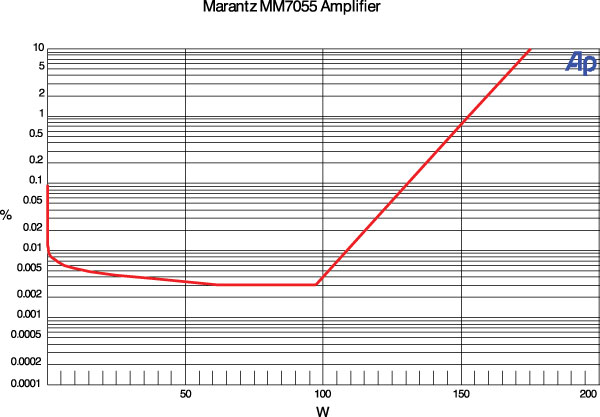
This graph shows that the MM7055’s left amplifier channel, with two channels driving 8-ohm loads, reaches 0.1 percent distortion at 130.7 watts and 1 percent distortion at 152.8 watts. Into 4 ohms, the amplifier reaches 0.1 percent distortion at 215.8 watts and 1 percent distortion at 236.4 watts. An input level of 101.9 millivolts was required to produce an output of 2.83 volts into an 8-ohm load, indicating an overall gain of +28.91 decibels using the RCA input. When using the XLR input, a level of 198.0 millivolts was required to produce an output of 2.83 volts into an 8-ohm load, indicating an overall gain of +23.16 dB.
THD+N from the amplifier was less than 0.007 percent at 1 kilohertz when driving 2.83 volts into an 8-ohm load using the RCA input. When using the XLR input under the same conditions, THD+N was less than 0.014 percent. Crosstalk at 1 kHz driving 2.83 volts into an 8-ohm load was –85.57 dB left to right and –84.22 dB right to left using the RCA inputs and –81.05 dB left to right and –81.09 dB right to left using the XLR inputs. The signal-to-noise ratio with an 8-ohm load from 10 hertz to 24 kHz with “A” weighting was –111.44 dBrA using the RCA input and –98.63 using the XLR input.—MJP

